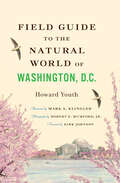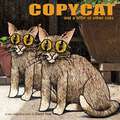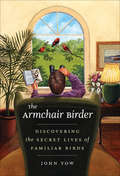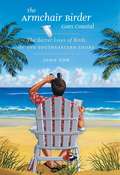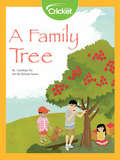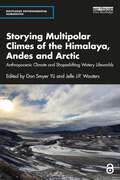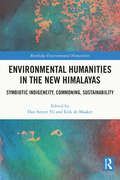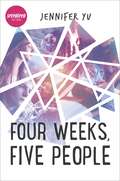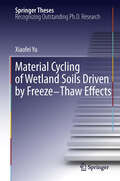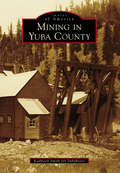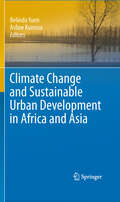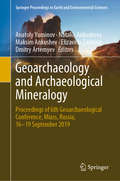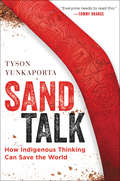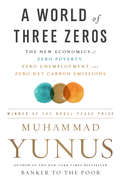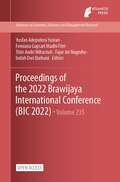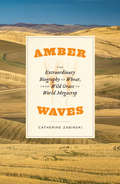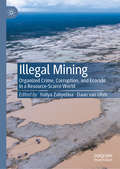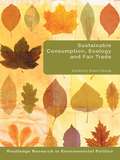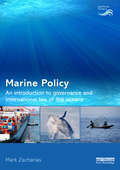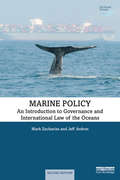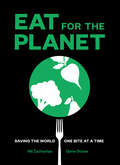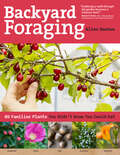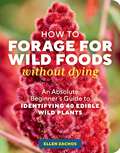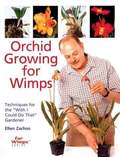- Table View
- List View
Field Guide to the Natural World of Washington D.C.
by Howard YouthDiscover the wonders of Washington’s complex ecosystem with this field guide to the district’s parks, gardens, urban forests and more.Every neighborhood of Washington, D.C., is home to abundant wildlife, and its large park network is rich in natural wonders. A hike along the trails of Rock Creek Park, one of the country’s largest and oldest urban forests, quickly reveals white-tailed deer, eastern gray squirrels, and little brown bats. Mayapples, Virginia bluebells, and red mulberry trees are but a few of the treasures found growing at the National Arboretum. A stroll along the Potomac and Anacostia Rivers might reveal stealthy denizens such as bullfrogs, largemouth bass, and common snapping turtles. In Field Guide to the Natural World of Washington, D.C., naturalist Howard Youth takes readers on an urban safari, describing the wild side of the nation’s capital. Detailed drawings by Carnegie artist Mark A. Klingler and photography by Robert E. Mumford, Jr., reveal the stunning color and beauty of the flora and fauna awaiting every D.C. naturalist.Residents and tourists alike will find this guide indispensable, whether seeking a secluded jog or an adventurous outing away from the noise of the city.
Copycat: and a Litter of Other Cats
by David Yow"Each page is delightful. These are premium cat drawings, quite worthy of this handsome hardcover book."--Newcity Lit"David Yow is part punk, part cat lady."--Brooklyn Paper"Fortunately, if you’ve been looking for a less embarrassing thing than Cat Fancy to adorn your coffee table, I’ve got good news: David Yow has just the book for you."--Verbicide Magazine"You could say Yow's book is the cat's MeYow. Snap it up fast cat peeps."--Cat Wisdom 101"Something good to read with your kids."--The Big Takeover"Surely you know crazy cat people like me who could use a hardback kitty-art book. Indulge them. They'll thank you--after they're done giggling--I'm sure of it."--Persephone Magazine"Feeling down? Leafing through this book is sure to make you smile! It is the purrfect gift for cat lovers of all ages and one you will want to turn the pages of again and again! It's also purrfect cocktail party fodder, keep this just a paw's reach away on your coffee-table, you have an instant conversation starter!"--Cat Chat with Caren and Cody"Cats and puns illustrated by a musician? It's like the Book Gods sensed a need in my life and amply provided."--The Cannonball Read"The only thing I did not like about Copycat is that, according to my human, kitties are not supposed to eat it."--Sparkle the Designer Cat"Cute drawings mixed with photos, very creatively crafted, with an endearing little face on each one."--Cottage Country Reflections"This is a great collection...an interesting and eye catching coffee table book."--Jenn's Review Blog"If you're a fan of graphics, words, or cats, this book will talk to you....I don't think you'll find another one like this unique book."--Journey of a Bookseller"This is a charming collection of drawings by David Yow...The drawings are all beautiful and David Yow's talent shines in each one."--Socrates' Book Reviews, "5-kitten" review"Copycat is a fun and whimsical book that any cat lover will enjoy."--Bergers Book Reviews"Hey David, it's me BUB. I read your book, and can't deny that I didn't read the whole thing in the first sitting. 'Catsup' and 'Catastrophe' are worth the price of admission alone. WOW YOW, MEOW."--Lil BUB, Internet cat celebrityDavid Yow's cat portraits, captured here for the first time in book form, are bold, striking, hilarious, and beautiful. Each portrait is based around a pun, but they capture so much more than wordplay. All cat lovers will find something to relish in this gorgeous coffee-table book, which is the perfect gift for cat enthusiasts, animal lovers, and anyone with a playful sense of humor.About the book, David Yow says: "I love cats. Always have. The only time I didn't have a cat was a brief hell in Chicago where I lived in an apartment whose landlord didn't allow them. At that place, I had a life-sized cardboard cutout of a cat which I named Toody. I also love wordplay. I'm the only adult I hang out with who still gets a kick out of puns. I make up palindromes. I used to write songs and poems (these days, I leave that for the songwriters and poets); in this book of cat-pun drawings, I have made a concerted effort to come up with ideas that range from really funny to really amusing. The entire litter of animals in this book are line drawings that are 'colored in' with photographic textures, and each cat is dropped into a photographic setting. Yep, that's the truth."
The Armchair Birder: Discovering the Secret Lives of Familiar Birds
by John YowBird lovers, take heart! While the birding literature is filled with tales of expert observers spotting rare species in exotic locales, John Yow's The Armchair Birder reminds us that the most fascinating birds can be the ones perched right outside our windows. In thirty-five engaging, humorous, and even irreverent essays, Yow reveals the fascinating lives of birds you probably already recognize and naturally want to know more about--because they're the ones you see nearly every day. Following the seasons of the year, Yow covers forty-two species, from the Carolina wren that rings in the springtime to the sandhill crane croaking high overhead at the end of winter. Leisurely and entertaining, the essays explore the improbable, unusual, and comical aspects of their subjects' lives--from the philandering of the ruby-throated hummingbird to the occasional dipsomania of the cedar waxwing. Rather than bare facts and field marks, The Armchair Birder offers observations, anecdotes, and stories--not only Yow's own, but also those of America's classic bird writers, such as John James Audubon, Arthur Bent, and Edward Forbush, experts who saw it all and wrote with wit and passion. With The Armchair Birder, backyard birders will take new delight in the birds at their feeders, while veteran check-listers will enjoy putting their feet up. All will applaud this unique addition to bird literature, one that combines the fascination of bird life with the pleasure of good reading.
The Armchair Birder Goes Coastal
by John YowWith his distinctively witty, anecdotal, and disarming voice, John Yow now journeys to the shore and shares his encounters with some of the most familiar and beloved coastal birds. Out of his travels--from North Carolina's Outer Banks, down the Atlantic coast, and westward along the Gulf of Mexico--come colorful accounts of twenty-eight species, from ubiquitous beach birds like sanderlings and laughing gulls to wonders of nature like roseate spoonbills and the American avocets. Along the way, Yow delves deeply into the birds' habits and behaviors, experiencing and relating the fascination that leads many an amateur naturalist to become the most unusual of species--a birder.Seasonally organized chapters explore the improbable, the wonderful, and the amusing aspects of these birds' lives. Yow embellishes his observations with field notes, anecdotes, and stories from some of America's finest naturalists--including John James Audubon, Arthur Cleveland Bent, Rachel Carson, and Peter Matthiessen. Combining the endless fascination of bird life with the pleasure of good reading, The Armchair Birder Goes Coastal is the perfect companion for any nature lover's next trip to the beach.
The Armchair Birder's Omnibus Ebook
by John YowAvailable for the first time together in this Omnibus E-Book, The Armchair Birder's Omnibus brings together both of John Yow's delightful books into one convenient e-book.While birding literature is filled with tales of expert observers spotting rare species in exotic locales, John Yow reminds us in The Armchair Birder, that the most fascinating birds can be the ones perched right outside our windows. In thirty-five engaging and sometimes irreverent vignettes, Yow reveals the fascinating lives of the birds we see nearly every day. Following the seasons, he covers forty-two species, discussing the improbable, unusual, and comical aspects of his subjects' lives. Yow offers his own observations, anecdotes, and stories as well as those of America's classic bird writers, such as John James Audubon, Arthur Bent, and Edward Forbush. This unique addition to bird literature combines the fascination of bird life with the pleasure of good reading.In his follow-up volume The Armchair Birder Goes Coastal, Yow now journeys to the shore and shares his encounters with some of the most familiar and beloved coastal birds. Out of his travels--from North Carolina's Outer Banks, down the Atlantic coast, and westward along the Gulf of Mexico--come colorful accounts of twenty-eight species, from ubiquitous beach birds like sanderlings and laughing gulls to wonders of nature like roseate spoonbills and the American avocets. Along the way, Yow delves deeply into the birds' habits and behaviors, experiencing and relating the fascination that leads many an amateur naturalist to become the most unusual of species--a birder.
A Family Tree
by Caroline YuHannah's grandmother has a tree growing in the front yard that produces a delicious, sweet fruit. The tree is very special to Hannah's family.
Storying Multipolar Climes of the Himalaya, Andes and Arctic: Anthropocenic Climate and Shapeshifting Watery Lifeworlds (Routledge Environmental Humanities)
by Dan Smyer Yü Jelle J.P. WoutersThis book initiates multipolar climate/clime studies of the world’s altitudinal and latitudinal highlands with terrestrial, experiential, and affective approaches. Framed in the environmental humanities, it is an interdisciplinary, comparative study of the mutually-embodied relations of climate, nature, culture, and place in the Himalaya, Andes, and Arctic. Innovation-driven, the book offers multipolar clime case studies through the contributors’ historical findings, ethnographic documentations, and diverse conceptualizations and applications of clime, an overlooked but returning notion of place embodied with climate history, pattern, and changes. The multipolar clime case studies in the book are geared toward deeper, lively explorations and demonstrations of the translatability, interchangeability, and complementarity between the notions of clime and climate. "Multipolar" or "multipolarity" in this book connotes not only the two polar regions and the tectonically shaped highlands of the earth but also diversely debated perspectives of climate studies in the broadest sense. Contributors across the twelve chapters come from diverse fields of social and natural sciences and humanities, and geographically specialize, respectively, in the Himalayan, Andean, and Arctic regions. The first comparative study of climate change in altitudinal and latitudinal highlands, this will be an important read for students, academics, and researchers in environmental humanities, anthropology, climate science, indigenous studies, and ecology. Chapters 8 and 9 of this book are freely available as a downloadable Open Access PDF at http://www.taylorfrancis.com/books/e/10.4324/9781003347026 under a Creative Commons Attribution-Non Commercial-No Derivatives (CC-BY-NC-ND) 4.0 license.
Environmental Humanities in the New Himalayas: Symbiotic Indigeneity, Commoning, Sustainability (Routledge Environmental Humanities)
by Dan Smyer Yü Erik De MaakerEnvironmental Humanities in the New Himalayas: Symbiotic Indigeneity, Commoning, Sustainability showcases how the eco-geological creativity of the earth is integrally woven into the landforms, cultures, and cosmovisions of modern Himalayan communities. Unique in scope, this book features case studies from Bhutan, Assam, Sikkim, Tibet, Nepal, Pakistan, and Sino-Indian borderlands, many of which are documented by authors from indigenous Himalayan communities. It explores three environmental characteristics of modern Himalayas: the anthropogenic, the indigenous, and the animist. Focusing on the sentient relations of human-, animal-, and spirit-worlds with the earth in different parts of the Himalayas, the authors present the complex meanings of indigeneity, commoning and sustainability in the Anthropocene. In doing so, they show the vital role that indigenous stories and perspectives play in building new regional and planetary environmental ethics for a sustainable future. Drawing on a wide range of expert contributions from the natural sciences, social sciences, and humanist disciplines, this book will be of great interest to students and scholars of environmental humanities, religion and ecology, indigenous knowledge and sustainable development more broadly.
Four Weeks, Five People
by Jennifer YuThey're more than their problems Obsessive-compulsive teen Clarissa wants to get better, if only so her mother will stop asking her if she's okay. Andrew wants to overcome his eating disorder so he can get back to his band and their dreams of becoming famous. Film aficionado Ben would rather live in the movies than in reality. Gorgeous and overly confident Mason thinks everyone is an idiot. And Stella just doesn't want to be back for her second summer of wilderness therapy. As the five teens get to know one another and work to overcome the various disorders that have affected their lives, they find themselves forming bonds they never thought they would, discovering new truths about themselves and actually looking forward to the future.
Material Cycling of Wetland Soils Driven by Freeze-Thaw Effects
by Xiaofei YuFreezing and thawing of soils is a common phenomenon in the winter-cold zone. The thesis titled "Material Cycling of Wetland Soils Driven by Freeze-Thaw Effects" systematically explores the freeze-thaw effects on the accumulation and release processes of carbon and nitrogen in wetland soils, which is a good step toward the investigation of biogeochemical processes in wetlands in seasonal freeze-thaw areas. It is also developing strategies aimed at global warming effects on the accumulation and release of carbon and nitrogen in wetlands. Dr. Xiaofei Yu works at the Northeast Institute of Geography and Agroecology, Chinese Academy of Sciences, China.
Mining in Yuba County
by Yubaroots Kathleen SmithMining in Yuba County illustrates the story of how this geologically unique part of California drew multitudes of people from around the world during the early days of the Gold Rush. It depicts the region's evolution from anarchy to civilization. It gives faces to the individuals who were instrumental in creating society in Yuba. It elaborates on incidents in which Yuba influenced the nation, on matters as historically significant as California entering the Union as a free state and affecting the outcome of the Civil War. Mining in Yuba fostered technological advancement precipitated by the depletion of surface gold and the necessity to get to the obscured gold. Conflicts between miners and agriculturists over hydraulic mining were litigated, and landmark legal decisions regarding the regulation of hydraulic mining all but ended the practice and were the beginnings of environmental protectionism and water rights issues in California. Finally, it reveals that despite heavy regulations that exist today, there is still mining in Yuba County.
Climate Change and Sustainable Urban Development in Africa and Asia
by Belinda Yuen Asfaw KumssaThis book is about African and Asian cities. Illustrated through selected case cities, the book brings together a rich collection of papers by leading scholars and practitioners in Africa and Asia to offer empirical analysis and up-to-date discussions and assessments of the urban challenges and solutions for their cities. A number of key topics concerning housing, sustainable urban development and climate change in Africa and Asia are explored along with how policy interventions and partnerships deliver specific forms of urban development. It is intended for all who are interested in the state of the cities and urban development in Africa and Asia. Africa and Asia present, in many ways, useful lessons in dealing with the burgeoning urban population, and the problems surrounding this influx of people and climate change in the developing word.
Geoarchaeology and Archaeological Mineralogy: Proceedings of 6th Geoarchaeological Conference, Miass, Russia, 16-19 September 2019 (Springer Proceedings In Earth And Environmental Sciences)
by Anatoly Yuminov Natalia Ankusheva Maksim Ankushev Elizaveta Zaykova Dmitry ArtemyevThis book presents general problems in geoarchaeology, and discusses geophysical solutions, X-ray fluorescence spectrometry applications, X-ray and isotope analyses and GIS technologies. It also examines practical reconstructions of technological processes used in ancient time, and investigates the use of minerals and rocks by ancient societies in the territories of modern Russia, Ukraine, Turkmenistan, and Tajikistan, as well as the characteristics of ores, metallurgical slags and data on the composition and impurities of archaeological metals. Intended for archaeologists, historians, museum workers and geologists studying noble metals and copper, the book is also a useful resource for students, graduate students, experts and anyone interested in the use of various minerals at different stages of humanity’s development.
Sand Talk: How Indigenous Thinking Can Save the World
by Tyson YunkaportaA paradigm-shifting book in the vein of Sapiens that brings a crucial Indigenous perspective to historical and cultural issues of history, education, money, power, and sustainability—and offers a new template for living.As an indigenous person, Tyson Yunkaporta looks at global systems from a unique perspective, one tied to the natural and spiritual world. In considering how contemporary life diverges from the pattern of creation, he raises important questions. How does this affect us? How can we do things differently?In this thoughtful, culturally rich, mind-expanding book, he provides answers. Yunkaporta’s writing process begins with images. Honoring indigenous traditions, he makes carvings of what he wants to say, channeling his thoughts through symbols and diagrams rather than words. He yarns with people, looking for ways to connect images and stories with place and relationship to create a coherent world view, and he uses sand talk, the Aboriginal custom of drawing images on the ground to convey knowledge. In Sand Talk, he provides a new model for our everyday lives. Rich in ideas and inspiration, it explains how lines and symbols and shapes can help us make sense of the world. It’s about how we learn and how we remember. It’s about talking to everyone and listening carefully. It’s about finding different ways to look at things.Most of all it’s about a very special way of thinking, of learning to see from a native perspective, one that is spiritually and physically tied to the earth around us, and how it can save our world.Sand Talk include 22 black-and-white illustrations that add depth to the text.
A World of Three Zeros: The New Economics Of Zero Poverty, Zero Unemployment, And Zero Carbon Emissions
by Muhammad YunusA winner of the Nobel Peace Prize and bestselling author of Banker to the Poor offers his vision of an emerging new economic system that can save humankind and the planet Muhammad Yunus, who created microcredit, invented social business, and earned a Nobel Peace Prize for his work in alleviating poverty, is one of today's most trenchant social critics. Now he declares it's time to admit that the capitalist engine is broken--that in its current form it inevitably leads to rampant inequality, massive unemployment, and environmental destruction. We need a new economic system that unleashes altruism as a creative force just as powerful as self-interest. Is this a pipe dream? Not at all. In the last decade, thousands of people and organizations have already embraced Yunus's vision of a new form of capitalism, launching innovative social businesses designed to serve human needs rather than accumulate wealth. They are bringing solar energy to millions of homes in Bangladesh; turning thousands of unemployed young people into entrepreneurs through equity investments; financing female-owned businesses in cities across the United States; bringing mobility, shelter, and other services to the rural poor in France; and creating a global support network to help young entrepreneurs launch their start-ups. In A World of Three Zeros, Yunus describes the new civilization emerging from the economic experiments his work has helped to inspire. He explains how global companies like McCain, Renault, Essilor, and Danone got involved with this new economic model through their own social action groups, describes the ingenious new financial tools now funding social businesses, and sketches the legal and regulatory changes needed to jumpstart the next wave of socially driven innovations. And he invites young people, business and political leaders, and ordinary citizens to join the movement and help create the better world we all dream of.
Proceedings of the 2022 Brawijaya International Conference (Advances in Economics, Business and Management Research #235)
by Yusfan Adeputera Yusran Femiana Gapsari Madhi Fitri Titin Andri Wihastuti Fajar Ari Nugroho Indah Dwi QurbaniThis is an open access book.We proudly present the 2022 Brawijaya International Conference (BIC) as the consecutive series of conferences that is organised and hosted annually by Univeritas Brawijaya, Indonesia. The BIC 2022 will be held in Bali, Indonesia, on October 7 – 9, 2022. The conference committee consists of multi department of Univeritas Brawijaya. The BIC 2022 will present multidisciplinary research, community service essay and research, and industrial findings related to sustainable development. The BIC 2022 will be a great opportunity for exchanging ideas and knowledge in all multidisciplinary areas for academicians, scientists, practitioners, and global executives. The event will facilitate a focus group discussion and consultation for the participants, especially stakeholders, to address the current issues and challenges including the future invention and innovation within multidisciplinary areas.The BIC 2022 invites fellow researchers/scientists, students, practitioners, global executives from multidisciplinary areas to participate and gather in this event to share and discuss the related research result and finding from all multidisciplinary areas. You should not miss the great opportunity to establish partnership and acquire tremendous knowledge within the BIC 2022.
Amber Waves: The Extraordinary Biography of Wheat, from Wild Grass to World Megacrop
by Catherine ZabinskiAt breakfast tables and bakeries, we take for granted a grain that has made human civilization possible, a cereal whose humble origins belie its world-shaping power: wheat. Amber Waves tells the story of a group of grass species that first grew in scattered stands in the foothills of the Middle East until our ancestors discovered their value as a source of food. Over thousands of years, we moved their seeds to all but the polar regions of Earth, slowly cultivating what we now know as wheat, and in the process creating a world of cuisines that uses wheat seeds as a staple food. Wheat spread across the globe, but as ecologist Catherine Zabinski shows us, a biography of wheat is not only the story of how plants ensure their own success: from the earliest breads to the most mouthwatering pastas, it is also a story of human ingenuity in producing enough food for ourselves and our communities. Since the first harvest of the ancient grain, we have perfected our farming systems to grow massive quantities of food, producing one of our species’ global megacrops—but at a great cost to ecological systems. And despite our vast capacity to grow food, we face problems with undernourishment both close to home and around the world. Weaving together history, evolution, and ecology, Zabinski’s tale explores much more than the wild roots and rise of a now ubiquitous grain: it illuminates our complex relationship with our crops, both how we have transformed the plant species we use as food, and how our society—our culture—has changed in response to the need to secure food sources. From the origins of agriculture to gluten sensitivities, from our first selection of the largest seeds from wheat’s wild progenitors to the sequencing of the wheat genome and genetic engineering, Amber Waves sheds new light on how we grow the food that sustains so much human life.
Illegal Mining: Organized Crime, Corruption, and Ecocide in a Resource-Scarce World
by Yuliya Zabyelina Daan Van UhmThis book provides a comprehensive analysis of the illegal extraction of metals and minerals from the perspectives of organized crime theory, green criminology, anti-corruption studies, and victimology. It includes contributions that focus on organized crime-related offences, such as drug trafficking and trafficking in persons, extortion, corruption and money laundering and sheds light on the serious environmental harms caused by illegal mining. Based on a wide range of case studies from the Amazon rainforest through the Ukrainian flatlands to the desert-like savanna of Central African Republic and Australia’s elevated plateaus, this book offers a unique insight into the illegal mining business and the complex relationship between organized crime, corruption, and ecocide. This is the first book-length publication on illegal extraction, trafficking in mined commodities, and ecocide associated with mining. It will appeal to scholars working on organized crime and green crime, including criminologists, sociologists, anthropologists, and legal scholars. Practitioners and the general public may welcome this comprehensive and timely publication to contemplate on resource-scarcity, security, and crime in a rapidly changing world.
Sustainable Consumption, Ecology and Fair Trade (Environmental Politics)
by Edwin ZaccaïThis timely volume discusses the debates concerning sustainable consumption and the environment. Sustainable consumption stands as a wide objective that attracts a growing attention within sustainable development policy circles and academic research. The contributors examine a range of interesting and relevant case studies including: household energy consumption, sustainable welfare, Fair Trade, Oxfam Worldshops, cotton farming and consumer organizations. Sustainable Consumption takes an interdisciplinary approach and is well-balanced, presenting theoretical debates as well as empirical evidence in order to: characterize the basic problems and determiners of an evolution towards, and the obstacles to, more sustainable consumption patterns produce knowledge on the profile of consumers sensitive, and not sensitive, to these issues explore realistic modes of interaction and innovation for changes in which consumers are involved. This text will be of interest to students and scholars of politics, environment studies and sociology.
Marine Policy: An Introduction to Governance and International Law of the Oceans
by Mark ZachariasThis textbook provides the reader with a foundation in policy development and analysis and describes how policy, including legal mechanisms, is applied to marine environments around the world. It offers a systematic treatment of all aspects of marine policy, including environmental protection, fisheries, transportation, energy, mining and climate change. It starts with a biophysical overview of the structure and function of the marine environment with a particular emphasis on the challenges and opportunities of managing the marine environment. An overview of the creation and function of international law is then provided with a focus on international marine law. It explores the geographic and jurisdictional dimensions of marine policy, as well the current and anticipated challenges facing marine systems, including climate change-related impacts and resource over-exploitation. The book should appeal to senior undergraduate and graduate students and form a core part of the curriculum for marine affairs, science and policy courses. It will also provide supplementary reading for students taking a course in the law of the oceans, but is not aimed at legal specialists.
Marine Policy: An Introduction to Governance and International Law of the Oceans (Earthscan Oceans)
by Mark Zacharias Jeff ArdronThis book provides readers with a foundation in policy development and analysis, describing how policy, including legal mechanisms, are applied to the marine environment. It presents a systematic treatment of all aspects of marine policy, including climate change, energy, environmental protection, fisheries, mining and transportation. The health of marine environments worldwide is steadily declining, and these trends have been widely reported. Marine Policy summarizes the importance of the ocean governance nexus, discussing current and anticipated challenges facing marine ecosystems, human activities, and efforts to address these threats. This new, fully revised edition has been updated throughout, including content to reflect the recent advances in ocean management and international law. Chapters on shipping, energy/mining and integrated approaches to ocean management have been significantly reworked, plus completely new chapters on the United Nations Convention on the Law of the Sea, and the impacts of climate change have been added. Pedagogical features for students are included throughout. Aligned with current course offerings, this book is an ideal introduction for undergraduates and graduate students taking marine affairs, science and policy courses.
Eat for the Planet: Saving the World One Bite at a Time
by Nil Zacharias Gene Stone“An indispensable guide for anyone who wants to live to age 100—by making sure there’s a livable world when you get there.” —Dan Buettner, New York Times–bestselling author of The Blue ZonesDo you consider yourself an environmental ally? Maybe you recycle your household goods, ride a bike, and avoid too much air travel. But did you know that the primary driver of climate change isn’t plastics, or cars, or airplanes? Did you know that it’s actually our industrialized food system? In this fascinating new book, authors Nil Zacharias and Gene Stone share new research, intriguing infographics, and compelling arguments that support what scientists across the world are beginning to affirm and uphold: By making even minimal dietary changes, anyone can have a positive, lasting impact on our planet. If you love the planet, the only way to save it is by switching out meat for plant-based meals, one bite at a time.“This fascinating, easy-to-read book will give you still another reason to eat plants and not animals: you will be doing a world of good—literally!” —Rip Esselstyn, #1 New York Times–bestselling author of Plant-Strong“Eating plants is not just good for your own health, it’s imperative for the health of the planet. This well-argued, well-written book makes it clear why everyone should consider a plant-based diet today.” —Michael Greger, MD, New York Times–bestselling author of How Not to Die“Possibly the single most important environmental book I’ve read in years. A must for everyone.” —Kathy Freston, New York Times–bestselling author of The Lean
Backyard Foraging: 65 Familiar Plants You Didn't Know You Could Eat
by Ellen ZachosThere’s food growing everywhere! You’ll be amazed by how many of the plants you see each day are actually nutritious edibles. Ideal for first-time foragers, this book features 70 edible weeds, flowers, mushrooms, and ornamental plants typically found in urban and suburban neighborhoods. Full-color photographs make identification easy, while tips on common plant locations, pesticides, pollution, and dangerous flora make foraging as safe and simple as stepping into your own backyard.
How to Forage for Wild Foods without Dying: An Absolute Beginner's Guide to Identifying 40 Edible Wild Plants
by Ellen ZachosThis on-the-go guide is perfect for new foragers eager to learn about the edible plants they're most likely to find, no matter what region they're in, and provides photos and easy-to-follow identification and use guidelines for the 40 most common—and most delicious—wild plants.How to Forage for Wild Foods without Dying is a book for anyone who likes to go on nature walks and would like to learn about the edible plants they&’re most likely to come across—no matter what region they&’re in. Author Ellen Zachos shares her considerable expertise, acquired over decades of foraging in every part of North America. She offers clear, concise descriptions of edible wild plants, in addition to any potential lookalikes, as well as critical information about proper harvesting, processing, and cooking. Zachos has curated the plant selection to include only the 40 most common, most delicious edible plants, ranging from black walnuts and juniper berries to elderflowers, burdock, fiddlehead ferns, lambsquarter, wild garlic, sunchokes, and many more. With Zachos&’s expert advice and easy-to-follow guidelines, readers will be confident in identifying which plants they can safely eat and which ones they should definitely avoid. Easy instructions for preparation and eating for maximum enjoyment are included.
Orchid Growing for Wimps
by Ellen ZachosA superb primer on orchid culture. It uses a step-by-step approach and doesn't skimp on relating complete details. There's a chapter showing easy-to-grow orchids in all their glory, and there's also a chapter warning about 'difficult' orchids to avoid. This book takes you on a visit to 16 terrific varieties you can easily handle.
